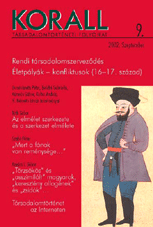„Mert a fának van reménysége…” Csonkolt fák Magyarországon
„For there is hope for a tree…” Pollarding in Hungary
Author(s): Péter SzabóSubject(s): History
Published by: KORALL Társadalomtörténeti Egyesület
Keywords: social history; environment and society; 14th–18th centuries; Hungary; landscape and history
Summary/Abstract: This essay examines tree pollarding in Hungary. Pollarding is the practice of cutting the branches of a tree two or three metres above the ground in order to prevent animals from grazing the young shoots. Pollard trees are a conspicuous and majestic feature of the landscape all over Europe. Although Hungary possesses a fair number of ancient pollards, no study has yet undertaken the task of examining the history of tree pollarding. Three types of sources are studied. Firstly, medieval written material is considered. Secondly, pictorial sources are introduced, some medieval, but mostly 16th century. Thirdly, standing trees and place-name evidence is included in the discussion, which represents the archaeological aspect of the problem. Based on all three source types, it is demonstrated that tree pollarding was practiced in medieval Hungary. The Latin word for a bolling (troncus) can be found in many perambulations, and its Hungarian equivalents (tőke and törzsök) are also identified. The essay is rounded up by a case-study on the village of Pusztaszentistván (Co. Pest, 30 km east of Budapest) that features standing pollard ashes and a characteristic place-name.
Journal: Korall - Társadalomtörténeti folyóirat
- Issue Year: 2002
- Issue No: 9
- Page Range: 155-172
- Page Count: 18
- Language: Hungarian

